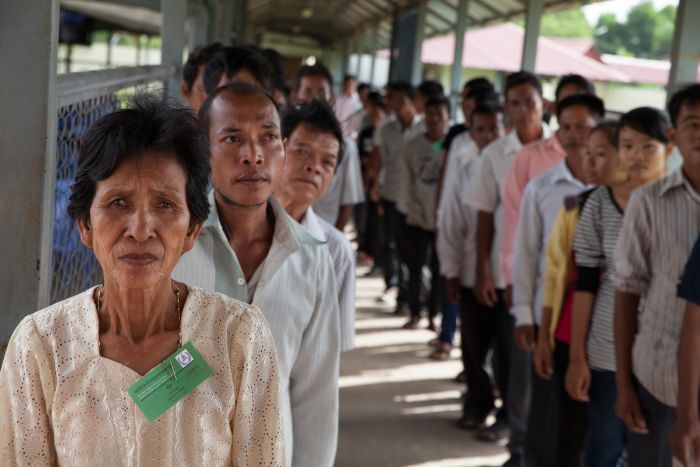Conclusion
One lesson arising from the confusion surrounding the “genocide fax” is the need for better intelligence. As they later acknowledged, UNAMIR commanders did not have the intelligence capabilities to make a proper evaluation of the information supplied by Turatsinze or to assess his reliability. Testifying before the ICTR in 2004, General Dallaire said that he acted largely on his instincts in recommending a raid on suspected arms caches on the basis of “information which had not yet been corroborated.”

UN Security Council debate on Rwanda, June 1994 —UN photo/Milton Grant
But inadequate intelligence was not the only challenge confronting the UN. It is now clear that the 47-year-old Canadian general found himself in a virtually impossible position in early 1994, two months after arriving in Rwanda at the head of a 2,548-member international peacekeeping force. With both the government and the RPF openly preparing for renewed hostilities, he felt he had to do something to “seize the initiative” from the hardliners. But he was limited by the restrictive “peace monitoring” mandate imposed by the UN Security Council and a lack of military resources. Apart from the 420-member Belgian contingent, which was responsible for security in Kigali, the rest of his force was under-equipped and ill-prepared.
What seemed like a risk worth taking from Dallaire’s perspective was viewed very differently by the UN Department of Peacekeeping Operations (DPKO) in New York. DPKO was coming under daily pressure from the United States and other permanent members of the Security Council to avoid a repetition of the Somalia debacle, so from where they sat, Annan and Riza had their own reasons to treat the unevaluated information from Turatsinze with a high degree of caution.
DPKO did not just reject the request for action in response to the “genocide fax”; it also displayed passivity in the face of repeated requests from both Dallaire and his civilian superior, Booh-Booh, in January and February for a generally more assertive stance on the part of UNAMIR. In a February 2, 1994, cable, Booh-Booh and Dallaire both called for “determined and selective” deterrent operations in cooperation with the Rwandan military. They also recommended a vigorous public information campaign, including the establishment of a UNAMIR-run radio station, to demonstrate that UNAMIR was doing “all within its ability to carry out its mandate.”
The alternative, they warned, was stark.
With hindsight, Dallaire’s warnings proved prescient. His superiors in New York can certainly be faulted for failing to support the judgment and recommendations of their own field commander. In the end, however, the UN Secretariat carried out the wishes of the Security Council and particularly its permanent members, led by the United States.
State Department records released under the Freedom of Information Act show that the UN officials briefed the United States, Belgium, and France on the “emerging crisis” in Rwanda, both in Kigali and in New York. But there was zero enthusiasm in the Clinton administration for running any significant risks in Rwanda in the wake of the Somalia debacle and mounting criticism of UN peacekeeping efforts by the Republican-controlled Congress. The United States took the view that it was up to the rival Rwandan factions to “assume their responsibilities”under the Arusha Accords. Failure to carry out the accords, Washington hinted, could result in the withdrawal of UNAMIR altogether.
Note: While we have drawn on multiple sources to research the background of the “genocide fax,” we acknowledge that there are still significant gaps due to the still-incomplete nature of the historical evidence. If you have further information, please contact mdobbs@ushmm.org. We will publish new details about the case as they become available.

